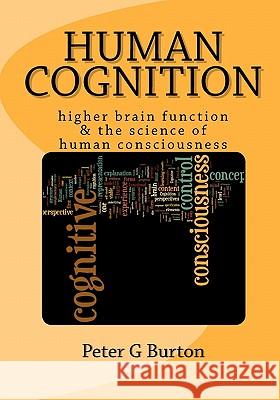Human Cognition: higher brain function & the science of human consciousness » książka
Human Cognition: higher brain function & the science of human consciousness
ISBN-13: 9781456307400 / Angielski / Miękka / 2011 / 460 str.
HUMAN COGNITION is organised as a four-part, sixteen session, graduate program on human higher brain function. > The Cognitive System Theory introduced here provides the first fully scientific model of how the hominid brain works, and explains how its two masterstrokes of cognitive development are achieved for each and every one of us in childhood. It explains how the mind originates and develops its power, on the way resolving the 'duality' problem. It explains how cognition is modularly structured and how this system is case-managed under endogenous control. It introduces fresh ideas about perspective in knowledge representation. It identifies consciousness in its various aspects with cognitive control, and an elegant matrix representation of its interacting control elements reveals the stereotypical transitions in control morphology which characterise child development. The origin of endogenous sequence-management skills is explained, as is the acquisition from within subective experience of an objectified self-model, contingent and peculiar to the bipedal hominid. >Part 1 begins with the mind. A competence won out of hesitancy to commit to action in a cognitive field of play. Consuming energy for cognitive work directed by an independent axis of control which is representation dependent. Mind-brain 'duality' resolves into cognitive progress and cognitive control dimensions, the latter identified with consciousness. >Part 2 continues with cognition and consciousness integrated into a control model of human cognition. This subsumes incoherent neuronal activity and generates our coherent experience of it. Two dimensions of control characterise its model of learning. The first orients internally to activity 'templates' subtended in four late-developing association areas of the brain. The second switches between attentional modes--the default mammalian 'spotlight', another developed through language for sequence-management, the ultimate developed through the self-model's choice-making for vector targeting skill. >Part 3 explores the implications of an autonomous, information-hiding, cognitive system for representational cognitive content as it is stored and refined in the brain. It embeds dimensionalised perspectives won from experience, satisfices its commitments to storage, and relies upon an intrinsically gated protocol of intermittent bursts of cognitive coherence. A new understanding of knowledge as it is held naturally in the brain totally refreshes our ideas of concept-formation, our fundamental need of them, and their practical use. >Part 4 investigates the changing morphology of consciousness. A specification is developed incorporating ten 'intensive' quality control elements and ten 'extensive' performance control elements. These drive and shape the autonomous cognitive system model. Three successive cognitive phases emerge in development from the matrix of their interactions. Consciousness steers us through phase-changes in cognitive representation as cognitive mastery is acquired via the self-model.
Zawartość książki może nie spełniać oczekiwań – reklamacje nie obejmują treści, która mogła nie być redakcyjnie ani merytorycznie opracowana.











